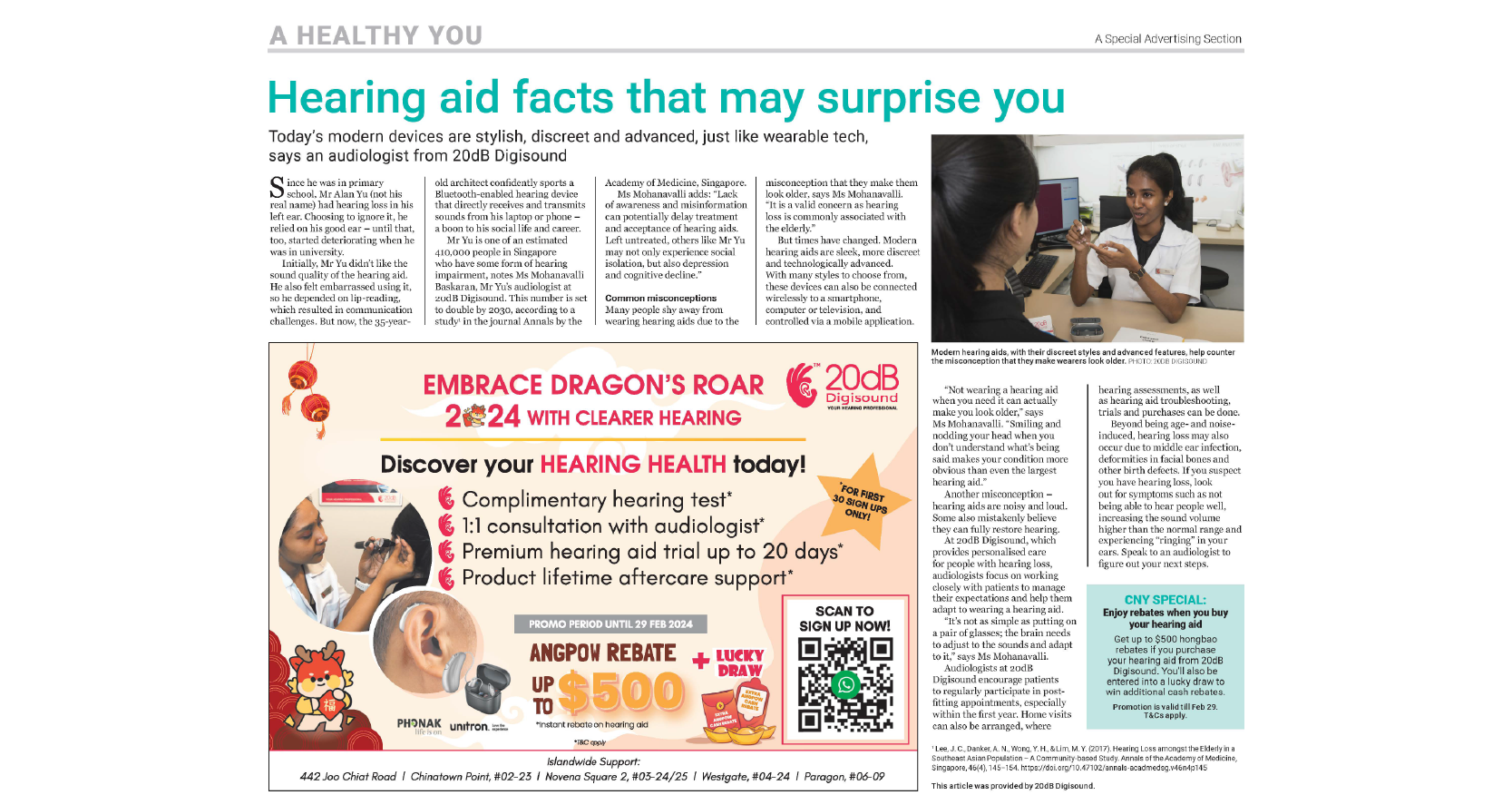
Since he was in primary school, Mr Alan Yu (not his real name) had hearing loss in his left ear. Choosing to ignore it, he relied on his good ear – until that, too, started deteriorating when he was in university.
Initially, Mr Yu didn’t like the sound quality of the hearing aid. He also felt embarrassed using it, so he depended on lip-reading, which resulted in communication challenges. But now, the 35-year-old architect confidently sports a Bluetooth-enabled hearing device that directly receives and transmits sounds from his laptop or phone – a boon to his social life and career.
Mr Yu is one of an estimated 410,000 people in Singapore who have some form of hearing impairment, notes Ms Mohanavalli Baskaran, Mr Yu’s audiologist at 20dB Digisound. This number is set to double by 2030, according to a study1 in the journal Annals by the Academy of Medicine, Singapore.
Ms Mohanavalli adds: “Lack of awareness and misinformation can potentially delay treatment and acceptance of hearing aids. Left untreated, others like Mr Yu may not only experience social isolation, but also depression and cognitive decline.”
Many people shy away from wearing hearing aids due to the misconception that they make them look older, says Ms Mohanavalli. “It is a valid concern as hearing loss is commonly associated with the elderly.”
But times have changed. Modern hearing aids are sleek, more discreet and technologically advanced. With many styles to choose from, these devices can also be connected wirelessly to a smartphone, computer or television, and controlled via a mobile application.
“Not wearing a hearing aid when you need it can actually make you look older,” says Ms Mohanavalli. “Smiling and nodding your head when you don’t understand what’s being said makes your condition more obvious than even the largest hearing aid.”
Another misconception – hearing aids are noisy and loud. Some also mistakenly believe they can fully restore hearing.
At 20dB Digisound, which provides personalised care for people with hearing loss, audiologists focus on working closely with patients to manage their expectations and help them adapt to wearing a hearing aid.
“It’s not as simple as putting on a pair of glasses; the brain needs to adjust to the sounds and adapt to it,” says Ms Mohanavalli.
Audiologists at 20dB Digisound encourage patients to regularly participate in post- fitting appointments, especially within the first year. Home visits can also be arranged, where hearing assessments, as well as hearing aid troubleshooting, trials and purchases can be done.
Beyond being age- and noise-induced, hearing loss may also occur due to middle ear infection, deformities in facial bones and other birth defects. If you suspect you have hearing loss, look out for symptoms such as not being able to hear people well, increasing the sound volume higher than the normal range and experiencing “ringing” in your ears. Speak to an audiologist to figure out your next steps.
Get up to $500 hongbao rebates if you purchase your hearing aid from 20dB Digisound. You’ll also be entered into a lucky draw to win additional cash rebates.
Promotion is valid till Feb 29. T&Cs apply
*This article is officially published on The Straits Times newspaper (7 Feb 2024).
----------
1 Lee, J. C., Danker, A. N., Wong, Y. H., & Lim, M. Y. (2017). Hearing Loss amongst the Elderly in a Southeast Asian Population – A Community-based Study. Annals of the Academy of Medicine, Singapore, 46(4), 145–154. https://doi.org/10.47102/annals-acadmedsg.v46n4p145